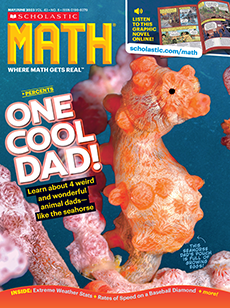Lincoln Park Zoo, Urban Wildlife Institute
Seth Magle sets up a camera trap to record the animals that live in a city park.
Four times a year, wildlife biologist Seth Magle heads into the field to look for animals. He spends hours driving to his research sites. Then he hikes to a series of spots he’s selected and sets up motion-activated cameras. They will photograph the wildlife he’s studying. But he’s not searching for rare species on a far-flung continent—Magle is visiting parks, cemeteries, and golf courses in the bustling city of Chicago.
Magle is the director of the Urban Wildlife Institute (UWI) at Chicago’s Lincoln Park Zoo. He and his colleagues study animals that make their home in the city—everything from squirrels and pigeons to raccoons, opossums, coyotes, and more. “People are often surprised when I tell them that we know a lot more about the lions in the Serengeti than we know about the squirrels in our own backyard,” he says. “But if we want to connect people to nature, a natural place to start is where they live.”
Seth Magle is a wildlife biologist. He looks for animals four times a year. Driving to his research sites takes hours. When he arrives, he hikes to a series of spots. There, he sets up motion-activated cameras that photograph wildlife. But he’s not searching for rare species on a far-flung continent. Magle is visiting parks, cemeteries, and golf courses in Chicago.
Magle is the director of the Urban Wildlife Institute (UWI) at Chicago’s Lincoln Park Zoo. His group studies animals that call the city home. It studies squirrels, and pigeons, raccoons, opossums, coyotes, and more. “We know a lot more about the lions in the Serengeti than we know about the squirrels in our own backyard,” he says. That surprises many people. “But if we want to connect people to nature, a natural place to start is where they live.”
